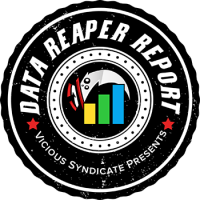
Welcome to the 76th edition of the Data Reaper Report!
Our Data Reaper Project, including the Data Reaper Live has 4,000 active contributors. Without them, this project would not be possible, so we’d like to thank all of our contributors for their help.
Quick Links
Class/Archetype Distribution | Class Frequency | Matchup Winrates | vS Power Rankings | vS Meta Score | Class Analysis & Decklists | Meta Breaker of the Week | How to Contribute | Credits
Number of Games
| Overall | 95,000 |
| Legend | ~ 500 |
| Ranks 1-5 | 15,000 |
| Ranks 6-10 | 24,000 |
| Ranks 11-15 | 38,000 |
Class/Archetype Distribution
[TABS_PRO id=11876]
Class Frequency
[TABS_PRO id=11877]
Class Frequency Discussion
The season reset and the launch of the HCT season has predictably brought on a rise in the Priest population. This is particularly true at ranks 1-5, where Priest is nearing 30% of ladder opponents. Razakus Priest is nearing 20% at this rank bracket, and is the most popular archetype at higher levels of play. Big Priest is the one Priest archetype that has shrunk in size and is seeing a fairly niche representation.
Warlock is continuing its slow decline in popularity. Control Warlock has been having a difficult time balancing itself between beating aggressive decks consistently and matching up to Razakus Priest. However, we do see a shift in its builds as players attempt to find solutions to the meta’s hostility. Zoo remains mostly unaffected, and has even risen in play.
Tempo Rogue’s rise in play has halted, and it’s the second most popular archetype at the bottleneck to legend. Other Rogue archetypes are pretty much non-existent at higher levels of play. People are mostly playing Mill/Kingsbane Rogue at the rank 15 floor, but that’s where they stay.
Druid’s prevalence continues to see an upward trend. Jade Druid is a fairly popular choice for players who are interested in giving Razakus Priest a difficult time, and we can see the archetype playing a significant role in the top legend meta where Razakus Priest is expected to be very prevalent towards the end of the month. Aggro Druid has also been climbing in popularity following its recent success, and its presence at the bottleneck to legend can no longer be ignored.
Paladin is seeing a significant internal shift. At lower skill levels, Aggro Paladin is still the most popular archetype. However, at ranks 1-5, Murloc Paladin has closed the gap. The tribal archetype has recently received more attention by top level players interested in refining its build to optimal performance, and their efforts are beginning to trickle down to the rest of the field. Overall, Aggro Paladin’s numbers have gone through a significant decline.
Hunter is looking to turn the tide, and the new month brings a rise in the class’ numbers after a continuous decline since the beginning of the expansion. Aggro Hunter’s presence at higher levels of play is quite noticeable, and the archetype is looking to carve out its place in the meta. Other Hunter decks have faded away, and the class’ diversity has collapsed into one very specific build (Senfglas).
Mage’s decline, on the other hand, has not stopped. Secret Mage is struggling to find its place in the meta with players not appreciative of its polarized matchups, making it an inconsistent ladder deck that can boom or bust. Big Spell Mage appears to be going through another experimental phase, while Exodia Mage is the same narrow deck it’s always been, preying on the slower decks in the current meta while hoping to dodge any form of aggression.
Warrior and Shaman look dead and there appears to be no interest in playing these classes whatsoever, with meme decks beginning to take hold of these classes. At ranks 1-5, you will meet a Warrior once every 100 games. Shaman? Once every 125 games. Warlock in Un’Goro and Hunter in MSG were more absent classes, but not by much.
[TABS_PRO id=11878]

[TABS_PRO id=11879]
vS Meta Score
[TABS_PRO id=11880]
vS Power Rankings Discussion
We’re one month into Kobolds and Catacombs and we’re witnessing a very interesting (but common for this time) phenomenon at higher levels of play – a general collapse in win rates. As decks become more refined and poorly performing archetypes fade, it’s getting more and more difficult to pick up wins, which pushes archetypes towards the 50% win rate mark. The meta is searching for its steady state. Tier 1 at higher levels of play is almost “empty”, which is indicative of an absence of truly ‘offensive strategies’. Flat win rates lead to increased viability and success of more strategies.
Some of the more significant declines:
- Tempo Rogue is being curbed by Razakus Priest’s rise in play. While this matchup is fairly close, Priest does have a small edge and it’s an important factor.
- Aggro Paladin has fallen harder in its performance. It’s one of the first decks that was figured out after launch, hasn’t changed much since, and the meta has caught up to it. The rise of Aggro Druid provides a new challenge as well, since much like Rogue, Druid is capable of consistently dominating early game board control against Paladins.
- Aggro Druid itself has fallen in its performance since its increased popularity is bringing a heightened level of attention/anticipation from opponents (we talked about it thoroughly last week). It’s also another archetype that’s being suppressed by Razakus Priest.
- Zoo Warlock is the last of the better performing archetypes to have taken a hit. It remains a very well rounded ladder deck that doesn’t have a glaring poor matchup.
Murloc Paladin is the only archetype that currently boasts a win rate of over 52% at ranks 1-5 and has benefitted tremendously from recent tweaks that optimized its standing against the field. The reason why it now looks like a better choice than Aggro Paladin has to do with important meta developments as well: The decline of Warlocks, which is the most difficult matchup for Murloc Paladin. The rise and refinement of Jade Druid, which beats Aggro Paladin quite consistently these days while falling short against the fish men. The recent rise in Tempo Rogue, a difficult matchup for both Paladin archetypes but one that is handled better by Murloc Paladin.
Even though Murloc Paladin has the highest win rate, the most influential archetype in the game and arguably the strongest one looks like Razakus Priest. Unlike most of the top performing meta decks, Razakus Priest has seen a rise in its win rate at higher levels of play and its dominating prevalence contributes to having the highest recorded Meta Score. Tempo Rogue is a close 2nd, and as we’ve been saying in earlier reports, these are the two decks that define the current meta at the two ends of the spectrum (Early game dictation vs. Late game dictation).
Other Priest archetypes see different trends. Big Priest’s win rate has finally dropped to match its relatively niche presence. It is appearing to be suffering from stagnation and has long lost its edge against Razakus Priest with the introduction of Psychic Scream. However, its win rate is definitely good enough to see success at all levels of play, especially when the distance to the highest recorded win rate is so small in the current meta. Dragon Priest continues to look strong. Both Combo and Spiteful Dragon Priests perform well against the field, with Combo Dragon being more situational.
Jade Druid is inching closer to 50%, and is still a developing archetype carrying a few different approaches. However, we don’t think it’s important that Jade Druid climbs further in its win rate in order to be a key player in the meta. The fact that it’s the only meta deck that boasts a reliably strong win rate against Razakus Priest nearly guarantees its significant presence and success at top legend ranks going forward.
Control Warlock continues to be the most interesting archetype to examine. Make no mistake, this archetype has tremendous potential, but its success is reliant on a good meta read, while a poor meta read will often be severely punished. Top level players have been finding success with defensive Warlock builds that match up well against most of the meta except for Razakus Priest, which is a terrible matchup without Giants and Cubes. Key to the success with Warlock is acceptance. Accepting that every build is going to be meta dependent, and if you’re running into the wrong crowd, you should be switching decks.
While Aggro Hunter did show initial promise, it’s still just “alright”. Its biggest issue is running into other early game decks. Paladins, Rogue and aggressive Druids give it a very difficult time and it does better in matchups that allow it to develop its early turns without much resistance. In a sense, it’s behaving very similarly to Secret Mage. However, Secret Mage performs better in the slow matchups that Aggro Hunter wants, which is why it’s looking like a superior choice.
Wondering if there is any important off-meta news? There are some. Big Spell Mage has jumped in its win rate and it’s attempting to reach the viability threshold. This is thanks to traction gained by HotMeowth’s new list, so if you’re enamored by the archetype and want to try and make it work on ladder, give it a shot. We can also observe the potential of Quest Rogue, especially in Priest heavy environments. It’s another deck we feel has a lot of potential in the tournament scene and in the narrow meta you can often find at top legend ranks.
Shaman and Warrior remain in the dumpster, and Pirate Warrior has taken a massive fall in its win rate, which is a result of what we like to call abandonment syndrome. What is abandonment syndrome? As a deck falls in play (for whatever reason), it eventually drops below a critical mass of players. At that point, the population of its players collapses in its quality, since more informed players stopped playing it. It’s the opposite effect of having dedicated players piloting a certain niche archetype they’re comfortable with. Pirate Warrior has been deemed obsolete, saw no improvements as the meta has moved forward, fallen in play, fallen in its win rate and subsequently, vanished into thin air.
Class Analysis & Decklists
Druid | Hunter | Mage | Paladin | Priest | Rogue | Shaman | Warlock | Warrior
Razakus Priest remains a mainstay for players making their early push to legend, and Priest is proving to be a powerhouse class as a whole, with both Dragon and Big Priest being very successful. The fact that the class is diverse in its playstyles makes it quite a mulligan headache for opponents.
In terms of card developments, not much has changed for the class, which appears to be quite settled into mostly refined shells. Razakus Priest continues its debate between Gadgetzan Auctioneer and Lyra the Sunshard. If you’re encountering a diverse field of opponents, Lyra is a superior choice as it is much stronger against aggressive decks and can pull off wins against your most difficult match-up, Jade Druid. If you’re encountering mirrors, Auctioneer becomes enticing since you want to increase your chances of finding Raza and Anduin faster than your opponent.
Spiteful Dragon Priest continues to split between Keleseth variants and Netherspite variants. One card that has been falling off in popularity is Grand Archivist. While the card can be very powerful against slower decks, it loses value in faster matchups, which tend to be the most difficult ones for the Dragon Priest. It’s arguable that cutting Archivist in order to shore up your early to mid-game will lead to more consistent results. Another option that goes in and out of lists is running a Silence with either Spellbreaker or Songstealer. Silence can be very powerful and disruptive against Warlock, but we don’t think it’s an auto-include since these cards don’t perform too well in other matchups and Warlock has been taking a step back in popularity recently. Consider narrow techs mostly if you’re running into a narrow local meta.
Warlock’s numbers exhibit a dip this week as the meta shifts with a new season beginning. The increase in Priests is generally not good news for our demonic friends, whether they are small and plentiful or large and full of Voidwalkers.
Control Warlock has seen new developments, and builds have evolved, or perhaps devolved. Rather than improving the matchup against Razakus Priest with additional threats and a cube package (which pushes the win rate against Razakus to the 50% mark), players have looked to shore up matchups against everything else, accepting a poor matchup should they queue into Raza and Anduin. Several players have found success hitting top legend this month with this approach. One of them is Grothen, who piloted Hoej’s Rin Control Warlock to the #1 spot.
Hoej’s list cuts most of the threats seen in Cube Warlocks, including cards that are particularly weak in aggressive matchups such as Mountain Giant and Faceless Manipulator. Cubes and Doomguards are also omitted, which guarantees that Possessed Lackeys pull Voidlords upon their death. Dark Pact is reduced to one copy as it has fewer applications in the absence of Carnivorous Cube. Since the deck plays defensively, it focuses on removal and grinding out opponents. Siphon Souls and Twisting Nether add to its reactive kit, while N’Zoth promotes the grind-out plan. Skulking Geist enables a fatigue win condition against Jade Druids, while Rin does the same in the Warlock mirror. Dirty Rats provide a chance to upset Priests if Raza or Velen are pulled, taking out their burst combo. Plated Beetles can replace Rats or Siphon Souls to counter aggressive decks harder. Tar Creepers could also provide a more immediate defense than Stonehill Defenders in these matchups.
The defensive variant of Control Warlock has yet to be fully figured out, and there are other directions it could take that we haven’t mentioned. It’s unlikely to find consistent, guaranteed success on ladder should Razakus Priest remain so prevalent, but is certainly a strong option if you happen to not run into them too much. In addition, this variant has massive potential in the tournament scene with the availability of a Priest ban, where it might establish itself as the Warlock deck of choice.
Meanwhile, Zoo Warlock quietly maintains a strong win rate despite being relatively ignored. Xixo hit legend this week with a new take on Keleseth Zoo, faster than the Standard build he initially pioneered. It runs two Spellbreakers and two Nerubian Unravelers, the latter intended to punish slower decks such as Razakus Priest and Jade Druid by denying their ability to utilize their most powerful tools against Zoo. With 13 1-mana minions, this list has a very consistent early game that can challenge the faster matchups in the meta quite well. Overall, Zoo has no outstanding matchups other than Jade Druid, but it doesn’t lose hard to anything either, making it a well-rounded deck that can find ladder success often.
Druid is becoming more and more popular at higher levels of play, with Jade Druid looking like the one deck capable of reliably beating Razakus Priest with any consistency. Aggro Druid has also enjoyed the increased popularity of Jade Druid and the shift away from Warlocks.
Jade Druid lists mostly vary between two different approaches. The more popular one which has found more success in recent days is the Oaken Summons build. Along with Ironwood Golem, this package can be quite strong against aggressive decks while providing armor gain, which is required to outlast Razakus Priest. Kun is the flex spot in the build and we believe the card still has a lot of merit due to its flexibility. It can be replaced with a cheap armor gain card, such as Earthen Scales or Feral Rage, or a removal/tech such as Wrath or Spellbreaker (if you’re running into Warlocks).
The second approach looks more like the Jade Druid of the previous expansion, with Mire Keeper and Jade Spirit at the 4 slot. This build is slower, but its Jade and mana acceleration are more consistent, so it will have an edge in the mirror and generally do better against slower decks. Since the build doesn’t run Oaken Summons, it can also fit cheap tech cards such as Spellbreaker or Ooze more easily in order to beat Warlocks.
Aggro Druid is an archetype that hasn’t seen much experimentation. The deck does have a few flexible spots that can be changed according to the meta. If you’re running into many aggressive mirrors, consider dropping Bittertide Hydras for Southsea Captains in order to increase the consistency of your early game. Spellbreaker can also be cut though it does have synergy with Hydras beyond its value against Warlocks (opponents tend to block the Hydra with a taunt if they can’t deal with it). Golakka Crawlers can also be added if you’re facing many Rogues. Tempo Rogue players have generally been less careful about playing their early game pirates since Golakka Crawlers have dropped in popularity since the release of the expansion.
Tempo Rogue continues to display impressive results. Similarly to Razakus Priest, it has a very balanced matchup spread, meaning that there aren’t many matchups that feel particularly bad or unwinnable.
With the changing meta, comes changing tech options for Tempo Rogue. Double Scalebane has increased in popularity while Spellbreaker has seen a decline, since it’s becoming more enticing to improve the Priest matchup rather than the less prevalent Warlock matchup. The Lich King remains an optional threat if you’re interested in improving your performance against slower decks even further.
Other Rogue decks have fallen to the wayside, though there are a few success stories, mostly coming from Miracle Rogue packing Leeroy/Shadowstep. J4ckiechan and Baumgott have hit legend early this month with slight modifications of Casie’s Miracle Rogue build. In a narrow Priest meta, there might be merit to explore Miracle Rogue as a potential soft counter.
Builds centered on Kingsbane, however, have been long reduced to memes. Mill Rogue doesn’t seem capable of performing at an acceptable level against aggressive decks and we haven’t seen any hints of that changing anytime soon.
Aggro Paladin may have finally been caught up to, if not taken over by, Murloc Paladin. The tribal archetype has seen quite a few changes over the last couple of weeks with players interested in refining it to peak performance. In addition to the refinement process, meta forces are also pushing Murloc in favor of Aggro, most notably the decline in Control Warlocks as well as the rise in Jade Druid.
Murloc Paladin has gone through many iterations and experiments and seems to have finally galvanized into an excellent shell for the current meta. There is still some debate regarding the optimal list, in two particular slots. The first debate revolves around Southsea Captain vs. Coldlight Seer. Any aggressive deck looks for an excuse to play Patches since it turns Southsea Captain into an absurdly over-statted turn 3 play. Coldlight Seer can be very powerful at leveraging a board lead, especially against decks that struggle to deal with multiple high health minions, such as Jade Druid. The second debate is centered on Rallying Blade vs. Unidentified Maul. Rallying Blade is a stronger standalone weapon since it can kill all of the popular early game minions in the current meta, but the deck usually lacks enough divine shield minions to make use of its ability. Maul is not as consistent, but has a higher ceiling of outcomes and can push a board lead faster.
At higher levels of play, Hunter is now almost entirely comprised of Aggro Hunter builds. Players seem to have given up on experimenting with secrets and contented themselves with the more consistent early game that Aggro Hunter displays. Aggro Hunter is also the only archetype getting any sort of results on ladder in recent days, with Senfglas piloting his list to #1 legend early on in the season. The use of Bittertide Hydras and Tundra Rhinos allows the build to compete with the massive amount of Priests at the top ranks. Running two Spellbreakers could be questionable, but in any deck that runs Hydras, having the ability to silence taunts and letting the Hydra do what it’s supposed to do (hit face) carries more merit than usual.
There is one other source of intrigue this week for Hunter, which comes from the HCT World Championship. Orange is the only player bringing Hunter, giving some hope for the class’ prospects of a good showing in the tournament.
Mage’s numbers continue to fall at all levels of play. Secret Mage’s vulnerability to fast decks, which are still quite popular right now, is causing players to move away from it. Secret Mage still sports good win rates against the slower decks in the meta, so it can find success if given the opportunity to queue into its good matchups, but can suffer from inconsistency in a diverse field of opponents.
Slower Mage decks have mostly gone extinct. HotMeowth hit #20 legend with a Big Spell Mage variant that’s a bit more defensive than the Spiteful Summoner build. Much like other control decks, this build looks to avoid meeting Raza Priests on ladder, with Dirty Rats looking to steal games in the poor matchup. Jade Druid is more manageable with Skulking Geist and Poly/Meteor present.
Pirate Warrior looks like the only remotely playable Warrior deck. It’s outclassed by other similar decks, and the rest of the class is full of decks that are of lower quality than the rest of the meta. There are seven classes out there for you to try, and Warrior is not one of them. If you really want to play Warrior, it’s best to wait until April.
Shaman is deep in the dumpster, and the player base has given up on getting it out of it. We’ve noticed that there have been a few experiments with the class, but none of them have led to anything but really bad Hearthstone decks. The power level in the current Hearthstone meta is far too high for a class that received two meme expansion sets in a row, and the final rotation of the year is usually when experimental decks get punished the most. Shaman is just not relevant right now, and we see no signs of it changing.
There are encouraging signs that the K&C meta, while not being a beacon of diversity, is at least not the balancing nightmare we’ve seen at the launch of KFT. There are enough viable choices within 7 classes that can hit legend, and do well at higher levels of play too.
Razakus Priest has seen an increase in its win rate at higher levels of play, and along with Tempo Rogue, sets the rules for this meta. Murloc Paladin’s stock has also risen relative to the field as a result of several internal improvements and meta developments.
We believe these three archetypes are currently the most consistently successful ones on ladder, but there are plenty of other competitive decks that are going to be very relevant going forward, and things are likely to change quite a bit towards the end of the month.
Our Data Reaper Project, including the Data Reaper Live has 4,000 active contributors. Without them, this project would not be possible, so we’d like to thank all of our contributors for their help.
Preparing our weekly article requires a significant amount of time and effort from many individuals. We would like to wholeheartedly thank our current Patreons, whose generous donations help us fund computing and server costs.
vS Gold is a new membership plan aimed to support our efforts towards improving our content and data analysis while receiving some bonuses and extra features.
Tier 3+ Patrons
Special thanks to Leo G, Chungfr, Kognar, Aaron B, Jed M, Drew M, Alan J, lalasong, Eric L, Steve F, Batz, Jeffee83, Zolstar, Pink Mage Diaries, Dekkster Gaming, Connor L, Eric H, Lim E, Stefan D, Audun K, Sean H, and asHram for supporting us for the month of January.
A HUGE thank you to our Tier 5 Patron(s): ByteCookie, and Curt S!
Contributors
Here are all the people that participated in bringing you this edition of the vS Data Reaper Report:



















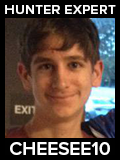


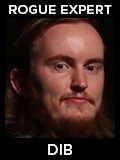

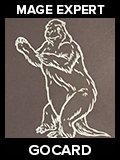




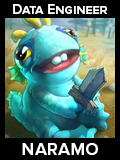

why keep calling spiteful summoner priest as dragon deck , if you remove dragon package the deck still work , it just weaker .
Because it’s got dragons in it… duh.